I need my work-from-home workspace to be well-lit, so I grabbed a couple of SKURUP table lamps from IKEA. These lamps can be positioned to sit to the right and left of my monitor, keeping my workspace illuminated throughout the evening. Unfortunately, in their unmodified state, they only support E14 light bulbs which are typically less powerful than what I was looking for. Fortunately, I have ways of modifying things.
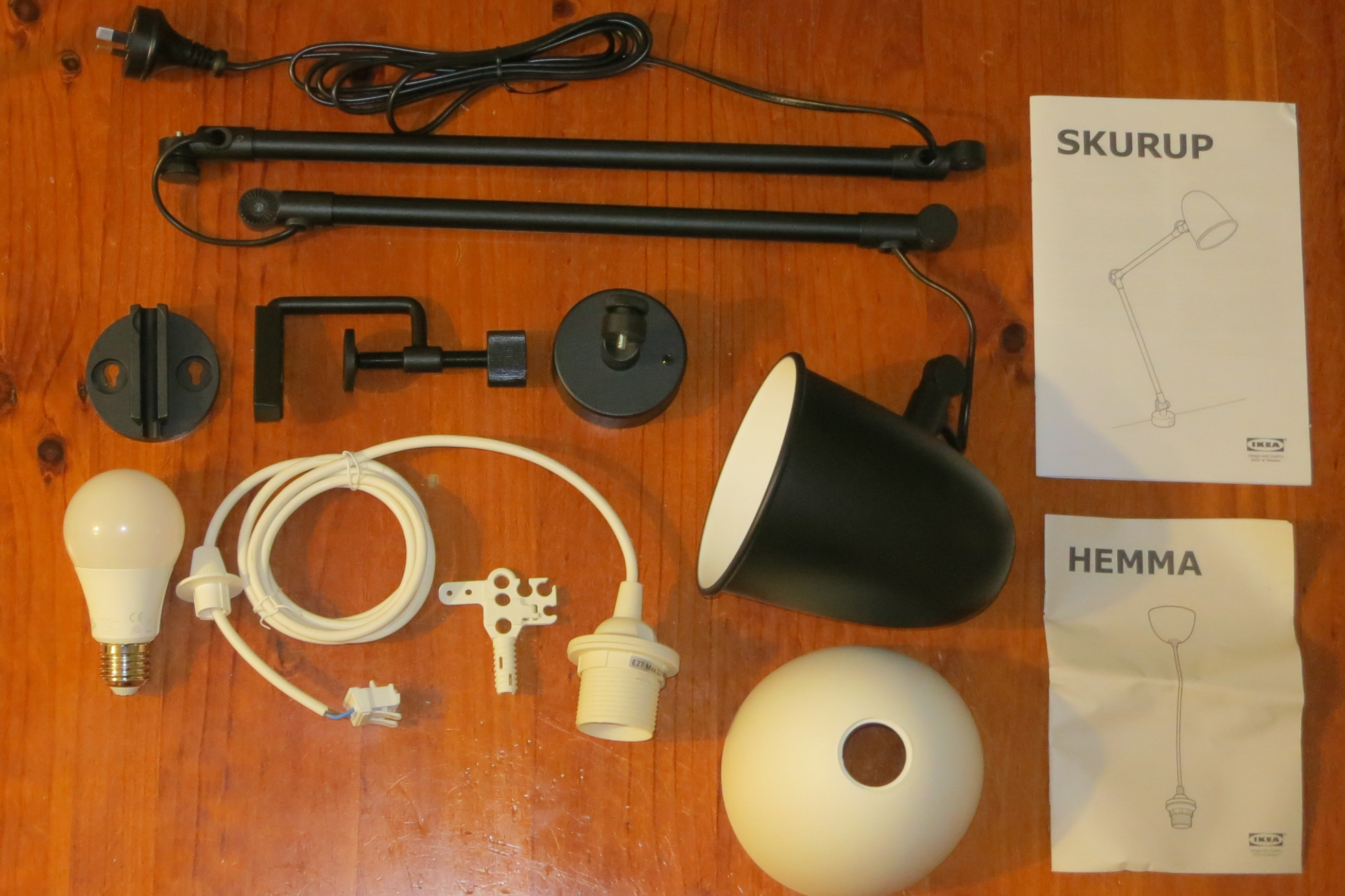
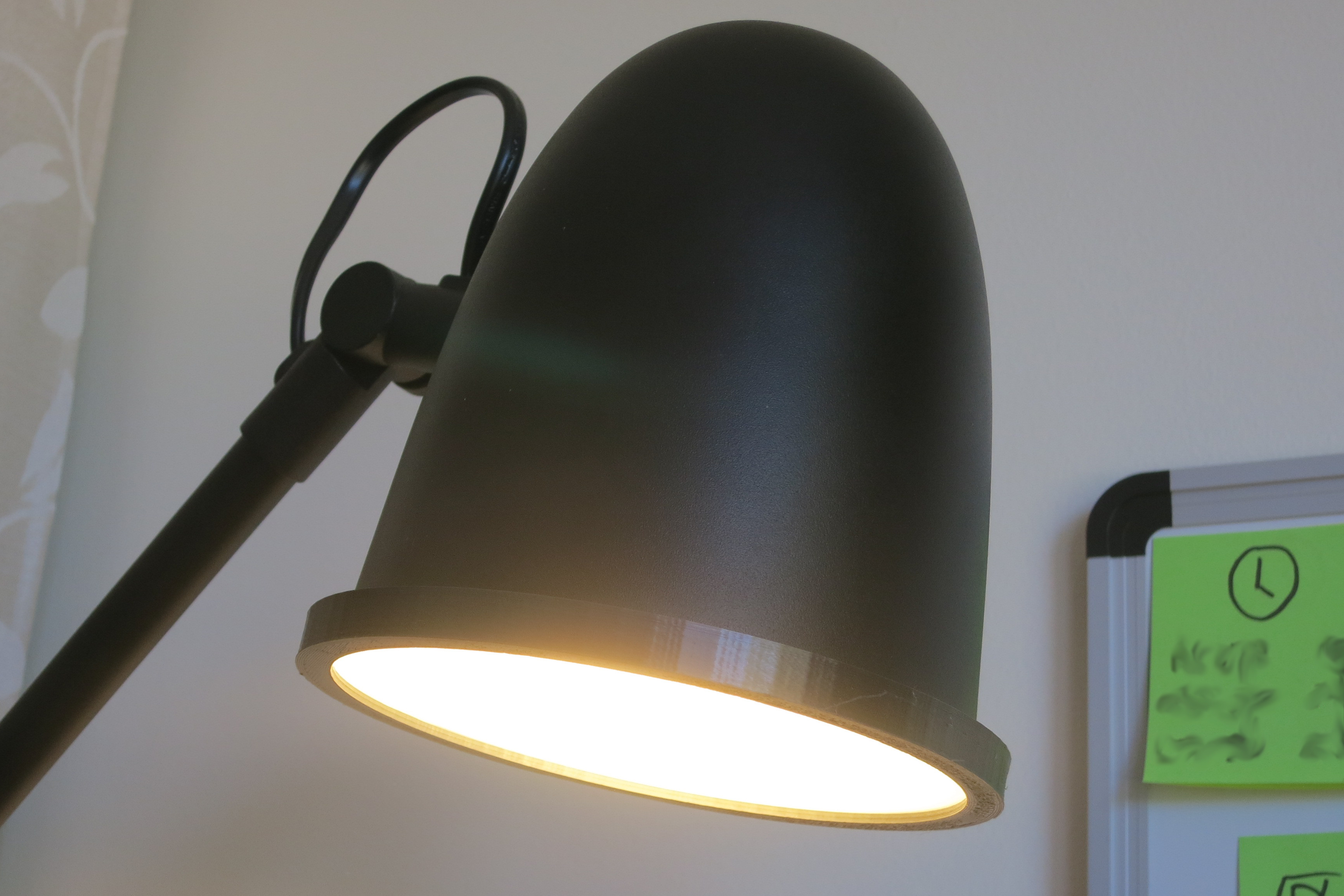
The goal of this project is to:
These lamps are cool and compact, but only supporting E14 bulbs up to 8.6W is a bit of a limiting factor. My Sengled E27 bulbs only draw 8.5W, while delivering 806lm of light. The only problem is getting them to fit in the E14 bulb holder.
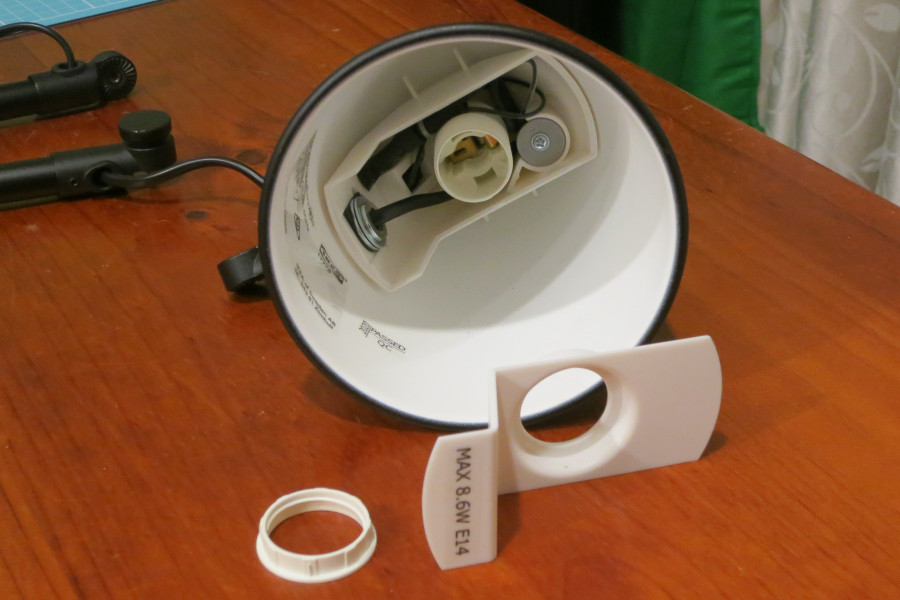
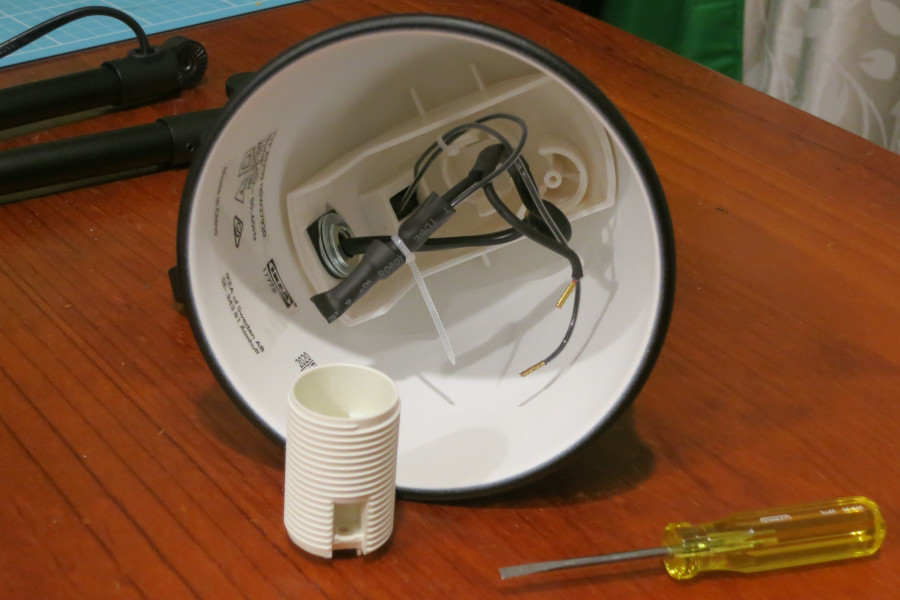
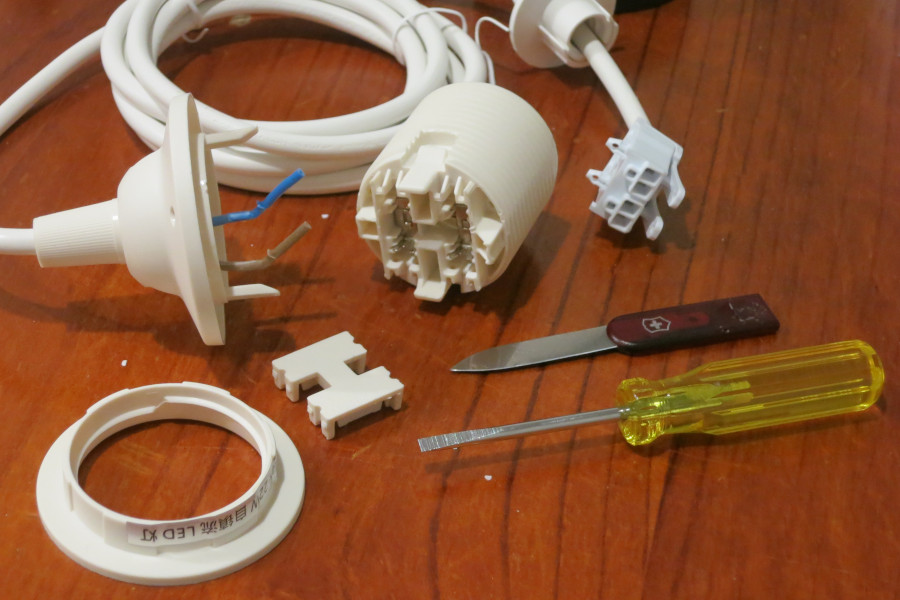
Both the SKURUP and HEMMA kits could be disassembled without needing to cut any wires or break any plastic. The SKURUP lamp head cannot directly support the E27 bulb holder, so the next step was to design and print a mount converter. I used OpenSCAD to design the piece, which is available in my printables repository on Github.
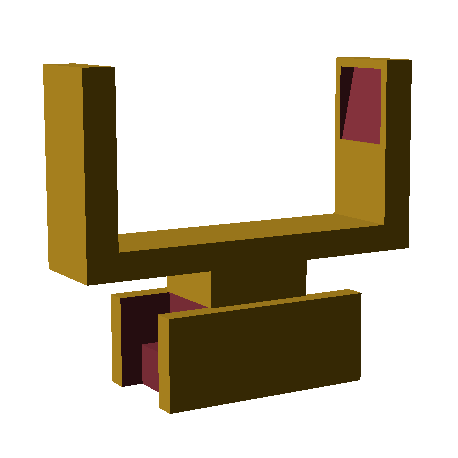
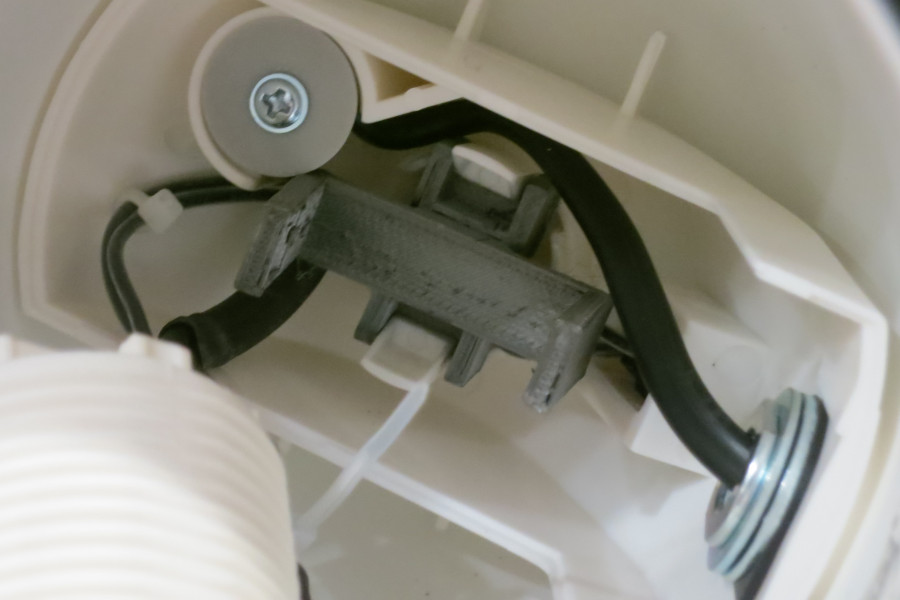
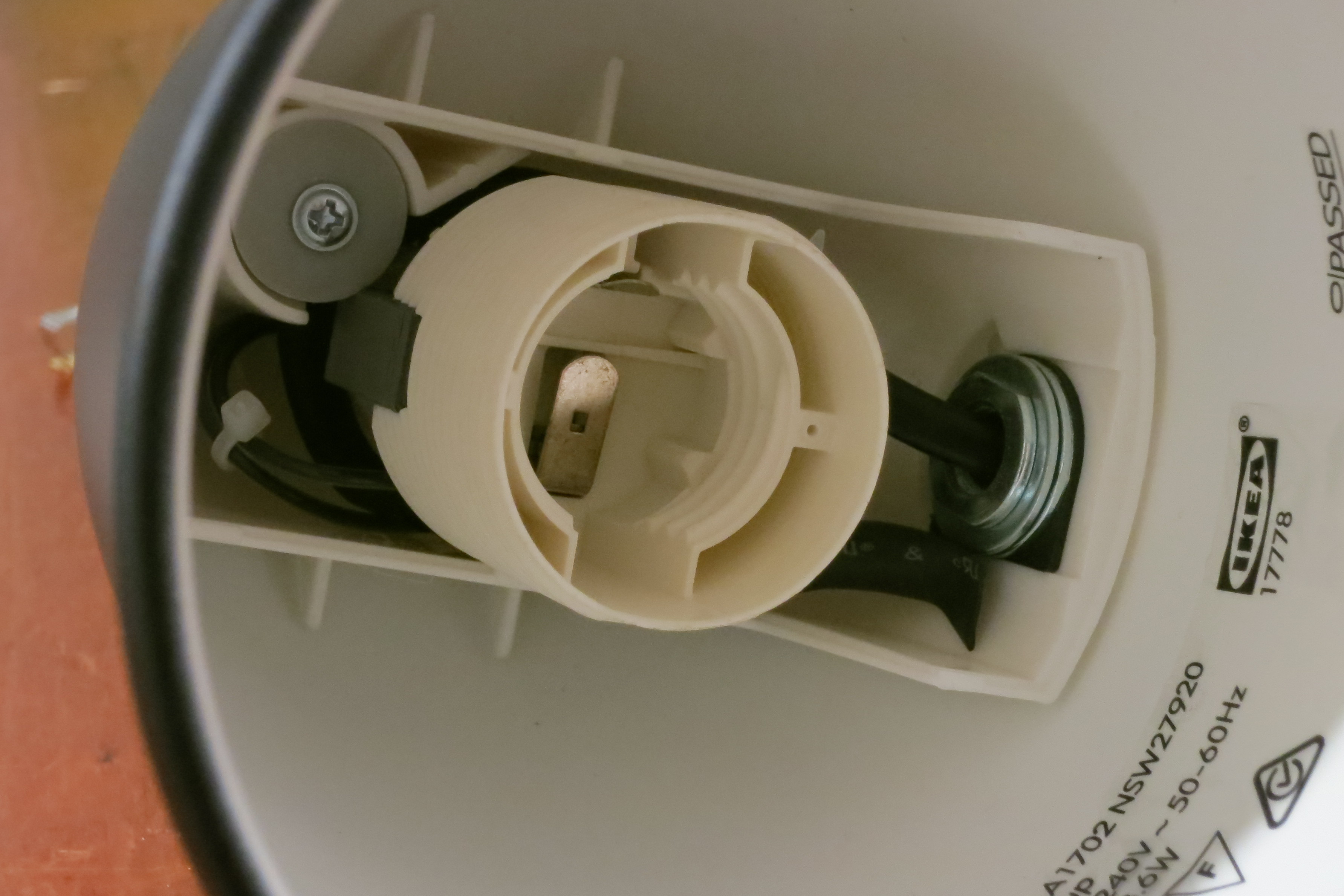
The lamp is ready to use, but the extra space taken up by the E27 bulb holder and mount converter forces the bulb to protrude outside of the lamp shade. This is awkward, but there is a cool workaround.
With LED bulbs, the power transformers and lighting circuitry are often embedded in the base of the unit, leaving the bulb completely empty. The "bulb" section does nothing more than diffuse light from the LEDs, so it is possible to remove the bulb to make the base fit better inside the lamp shade. Not all LED bulbs are built like this, so do your research before trying to take one apart!
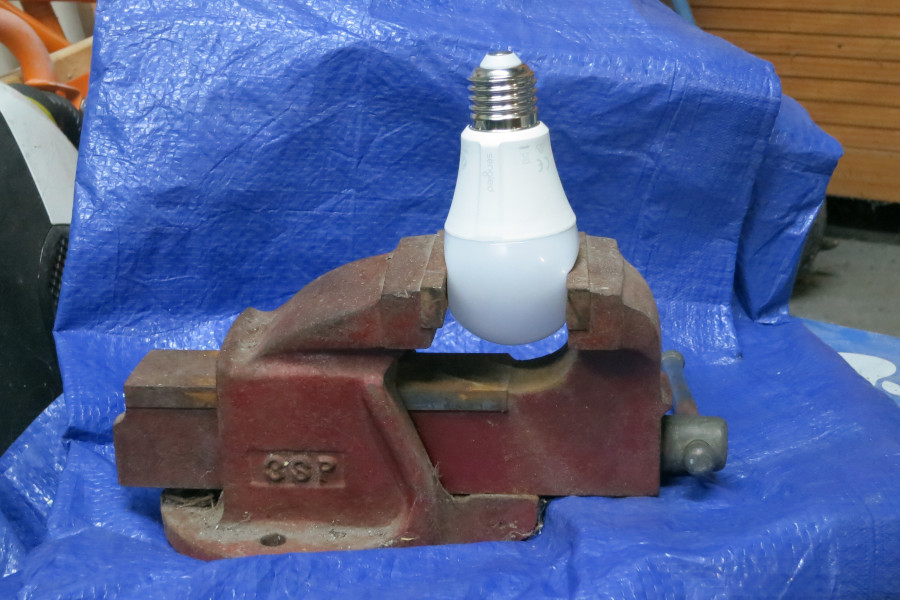
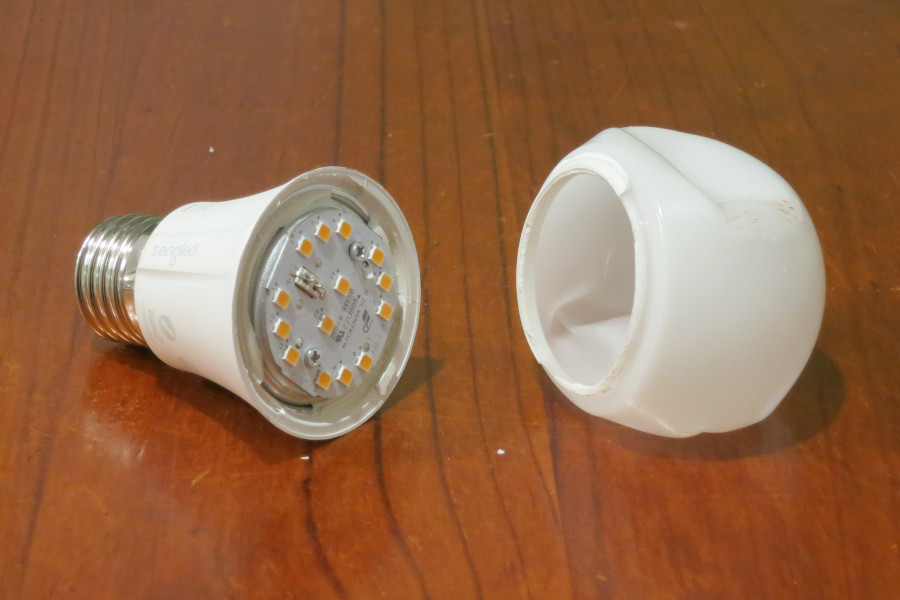
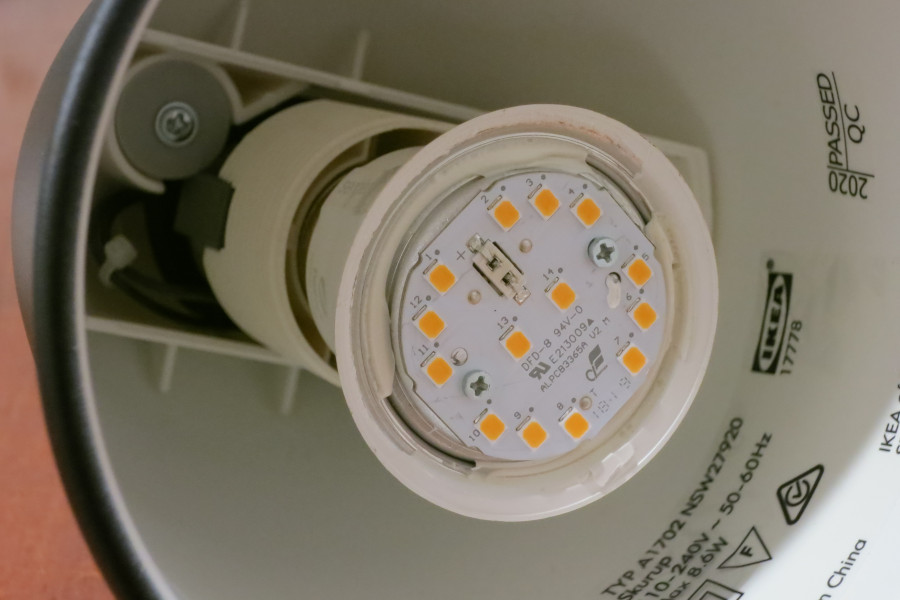
Finally, we can re-create the diffusing effect by using a diffusing sheet and clip-on lamp shade cover to hold it in place. The cover design is available in my printables repository on Github.
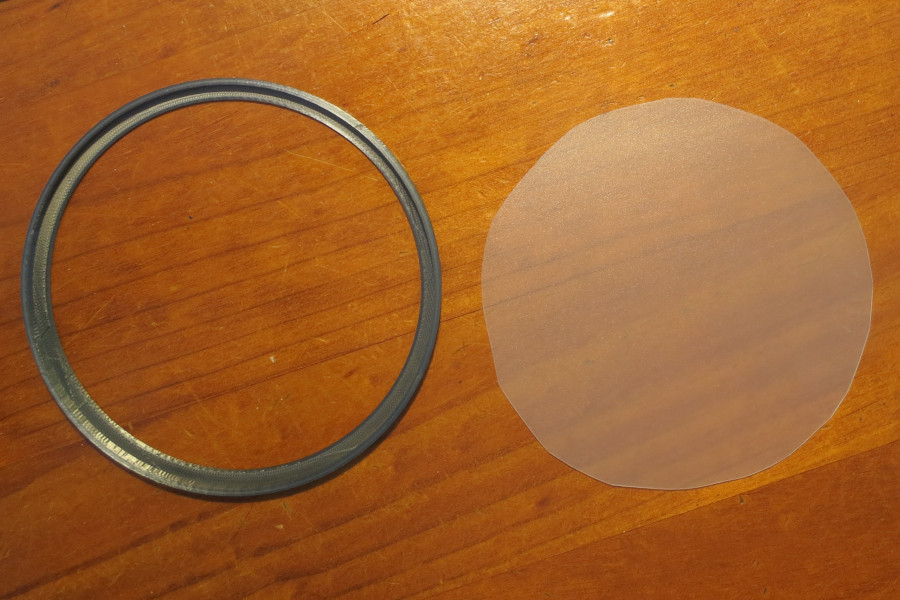

For these lamps to be most effective, they should respond to ambient lighting (illuminance) and attempt to brighten up my workspace if it gets too dim. This means more time tinkering with my home automation setup.
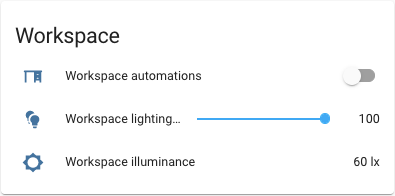
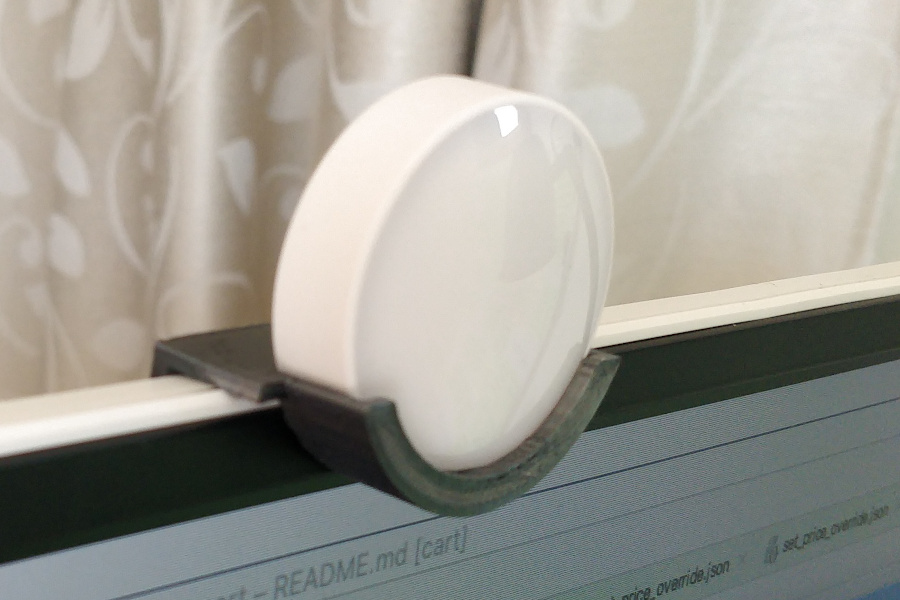
In the workflow below:
lux < 75, set brightness to 100100 < lux < 150, set brightness to 75200 < lux < 250, set brightness to 25300 < lux, set brightness to 0
If you have any feedback or questions related to this article, please reply to my post on Twitter.
This article is part of the Home automation set.